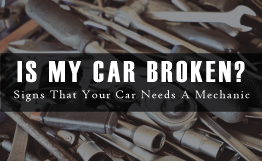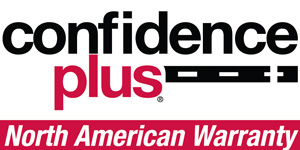Business Hours
- Monday - Friday
- BASHFORD AVE
7:30 AM - 4:30 PM
Phone: (502) 203-0454 - PRESTON HWY
7:00 AM - 4:00 PM
Phone: (502) 230-4279
AMERICAN BRAKE CENTERS INC.
(502) 203-0454 for Bashford Ave or (502) 230-4279 for the Preston Hwy location | 3435 Bashford Ave Ct Louisville, KY 40218
AUTONET TV
Archive for October 2025Keeping Your Cool (Coolant System)Posted October 27, 2025 9:53 AMNo matter what the weather is like outside, your internal combustion engine expects to keep its cool all the time, even when it's really cold. That's because engines create the power that moves you to your destination by a series of tiny explosions of a fuel and air mixture. In turn, that generates a lot of heat in a small space. Your vehicle has a complete cooling system with a lot of different parts that work together to keep the temperature at a point where the metal engine parts won't heat up enough to warp. Its lifeblood is coolant, a liquid that circulates through the engine (and, in most vehicles, the transmission, too) through a series of hoses and tubes. In order to get rid of the coolant's heat, your vehicle has a part you probably recognize: the radiator. It does what its name proclaims: radiates heat. The radiator has a series of thin metal fins that coolant goes through, and when outside air passes over them, the heat is dissipated from the radiator into the air. The water pump (which is technically a coolant pump) is what propels the coolant where it needs to go. When there's a problem in the coolant system, it may because it's leaking somewhere. A few things to look out for are the temperature gauge heading into the hot, or red, zone, fluid leaks under your vehicle, or the sweet smell of coolant under your vehicle after it's been parked. If your vehicle has any of those signs, bring it in so we can check things out. A technician will inspect the water pump and hoses for any signs of leaks. They'll also look for leaks or holes in the radiator core or cores. One other potential trouble spot is the radiator cap that can sometimes fail to keep the required pressure in the radiator. Once the problems are fixed, they'll add the correct coolant and you'll be on your way. We want you to always keep your cool. American Brake Centers Inc.
Out with the Old (Vehicle Parts that Wear Out)Posted October 22, 2025 6:10 AMSome drivers don't pay any attention to their vehicles until something breaks. Others take them into their service repair facility for maintenance even before a problem develops. Still, even if you fit into the second group, there are some parts on a vehicle that will simply wear out over time. Your vehicle has gaskets in several places. They use a flexible material to seal the gaps between metal parts that fit together. After time, that material shrinks or gets brittle and fails. Eventually, after time, you will have to get gaskets replaced. Same goes for belts. Your engine has belts that help take the mechanical energy of the engine to drive other parts such as the generator and air conditioner. Heat and age will eventually cause these belts to wear out or break, so you'll need new ones at some point. You'll also find yourself buying brake pads. As much as you may try to go easy on them, brake pads work by wearing off a little bit of them each time they help you stop your vehicle. Do a lot of stop-and-go driving and you'll hasten the process. No battery lasts forever, and your vehicle's battery is no exception. It can only charge and discharge electricity so many times. Count on getting no more than 4 or 5 years out of a battery, fewer if you live in a very hot spot. Other parts that don't age well? Tires. They can have plenty of tread left on them, but rubber gets old and loses its flexibility. Tires have their date of manufacturer stamped on them for a reason. Finally, your muffler is being subject to moisture from inside and out: inside because of moisture-containing exhaust and outside from the elements outdoors. Stainless steel or other alloys will last longer, but after a while, either the moisture or constant pounding from vibrations will take their toll. That's why it's important to maintain every part on your vehicle. You can't wave a magic wand and make everything last forever, but take care of your vehicle and it'll take care of you.
No Fuel-ing! (Fuel Filter Replacement)Posted October 12, 2025 3:43 AMYour vehicle has a few filters you might be somewhat familiar with. There’s the oil filter that removes impurities from your engine’s oil, and a couple of different kinds of air filters that prevent contaminants from getting into the engine and the cabin. But you may not know that your vehicle also has a fuel filter. The fuel filter keeps contaminants such as particles and other foreign substances from making their way into the engine. They can result from using lower quality fuel, driving in dirty or stop-and-go conditions, or simply what happens after many weeks and months of travel. At some point, your fuel filter will start to get clogged up and won’t let the fuel get to your engine easily. You might notice some signs of that: your engine doesn’t have the power it used to, it may misfire when you accelerate, it may be harder to start, or it may stall while you’re driving. You may notice your vehicle vibrating a lot when you’re idling. If you notice any of those symptoms in your vehicle, you should bring it in for us to take a look. We can run diagnostics such as a fuel pressure test that will let us know if your fuel filter is finished or still has a little more life remaining. Even better, it’s a good idea to replace the fuel filter BEFORE you start seeing symptoms. Each vehicle’s manufacturer recommends an interval at which you should change your fuel filter. Older vehicles may recommend it be changed fairly frequently, such as every 30,000 miles/50,000 km. Newer vehicles from different manufacturers have much longer intervals, and that’s something we can check so you can stay on schedule with regular maintenance. Make sure your fuel filter is doing its job so your engine can keep doing its job. American Brake Centers Inc. Timing is Everything (Timing Belt)Posted October 5, 2025 3:43 AMTalk about exquisite choreography; it happens under the hood of your vehicle every time you take a drive. Your engine’s many complex parts must work exactly together. One key is a part called a timing belt, which enables the synchronizing of two of your engine’s components, the camshaft, and the crankshaft. The timing belt coordinates the valves in your engine to open and close at the appropriate time to get exhaust out of the engine’s cylinders. Timing belts may also power the water pump and the oil pump. The belt is made of rubber. Some engines use a timing chain (made of metal). Your vehicle’s manufacturer recommends an interval after which you should have your timing belt or chain replaced, and that service should be part of your vehicle’s regular maintenance. It’s always better to replace it before it breaks rather than after. After all, if your timing belt breaks while you’re driving down the road, it throws off the whole sync of engine parts and can cause major damage to the type of engines most commonly used in vehicles today. It's also important to remember that a timing belt is made of rubber, and rubber deteriorates with time, no matter how much use it gets. Have us look at your timing belt to see if it’s time to get it replaced. Here are some signs to look for that will let you know if your timing belt is failing. You might have trouble starting your vehicle, it may misfire or black smoke may come out the tailpipe. If you notice any of those symptoms, bring your vehicle in and have us take a look right away. When it comes to your engine, timing is everything. American Brake Centers Inc. | ||
SearchArchiveJune 2019 (18)July 2019 (4) August 2019 (4) September 2019 (5) October 2019 (4) November 2019 (4) December 2019 (5) January 2020 (5) February 2020 (4) March 2020 (5) April 2020 (4) May 2020 (5) June 2020 (4) July 2020 (4) August 2020 (5) September 2020 (4) October 2020 (4) November 2020 (5) December 2020 (4) January 2021 (6) February 2021 (4) March 2021 (4) April 2021 (4) May 2021 (5) June 2021 (4) July 2021 (4) August 2021 (5) September 2021 (4) October 2021 (5) November 2021 (4) December 2021 (4) January 2022 (6) February 2022 (4) March 2022 (4) April 2022 (4) May 2022 (5) June 2022 (4) July 2022 (5) August 2022 (4) September 2022 (4) October 2022 (5) November 2022 (4) December 2022 (4) January 2023 (5) February 2023 (4) March 2023 (4) April 2023 (5) May 2023 (4) June 2023 (4) July 2023 (5) August 2023 (4) September 2023 (4) October 2023 (5) November 2023 (4) December 2023 (5) January 2024 (5) February 2024 (4) March 2024 (5) April 2024 (4) May 2024 (4) June 2024 (5) July 2024 (4) August 2024 (4) September 2024 (5) October 2024 (4) November 2024 (4) December 2024 (5) January 2025 (4) February 2025 (4) March 2025 (5) April 2025 (4) May 2025 (4) June 2025 (5) July 2025 (4) August 2025 (5) September 2025 (4) October 2025 (4) November 2025 (4) | CategoriesWhat Customers Should Know (48)Fuel Economy (5)Tires and Wheels (2)Timing Belt (5)Fluids (3)Maintenance (8)Service Intervals (1)Alignment (5)Check Engine Light (4)Steering (5)Exhaust (6)Shocks & Struts (2)Air Conditioning (4)Brakes (11)Older Vehicles (1)Cooling System (5)Battery (4)Water Pump (1)Oil Change (7)Transmission (2)Tires (3)Customer Detective Work (1)Fuel Saving Tip: Slow Down (1)Fuel System (2)Auto Safety (3)Keys to a long lasting vehicle (2)Windshield Wipers (2)Serpentine Belt (1)Alternator (3)Automotive News (2)TPMS (2)Headlamps (2)Service Standards (2)Cabin Air Filter (2)Fuel Pump (1)Safety (2)Winter Prep (1)Drive Train (2)Inspection (3)Engine Air Filter (1)Dashboard (1)Spark Plugs (1)Shocks and Struts (1)Battery Replacement (1)Tire Rotation and Balancing (1)Fuel Filter (1)Trip Inspection (1)Brake Service (1) | |








